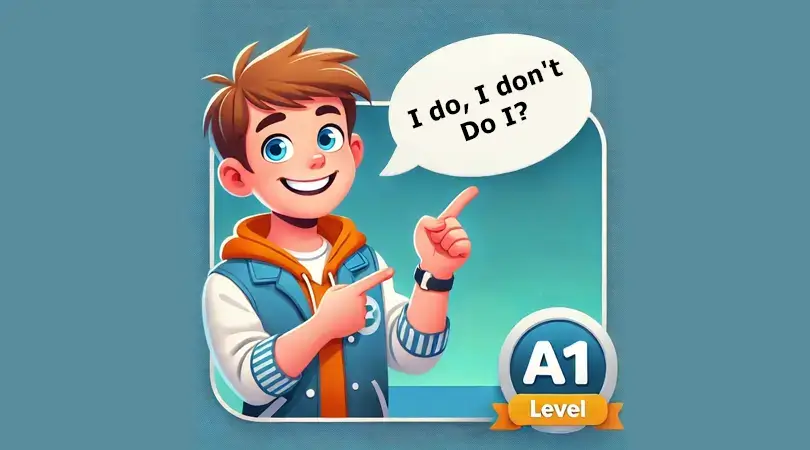Present simple – I do, I don't, Do I?
- Home ›
- Grammar ›
- A1 Elementary ›
- Present simple – I do, I...




Complete the sentences with the correct present simple form of the verb.
Choose the correct form of the present simple to complete each question or statement.
Choose the correct variant to complete the sentences in the present simple tense.
Complete the sentences and questions with the correct present simple forms.

- 14 November, 2024
- 491
- Grammar
- A1 Elementary
Present simple – I do, I don't, Do I?
Present Simple Tense: A Beginner's Guide (A1)
The present simple tense is one of the most common tenses in English. It's used to describe things that happen regularly, are always true, or are habits. Here's a simple guide to help you understand it:
How to Form the Present Simple
The present simple is generally very easy to form. Here's the basic structure:
Affirmative Sentences (Positive Statements)
- I/You/We/They + base form of the verb
- He/She/It + base form of the verb + -s/-es
Examples:
- I play football.
- She eats breakfast every morning.
- He studies English.
Negative Sentences
- I/You/We/They + do not (don't) + base form of the verb
- He/She/It + does not (doesn't) + base form of the verb
Examples:
- I don't like coffee.
- She doesn't eat meat.
- He doesn't speak French.
Questions
- Do + I/you/we/they + base form of the verb?
- Does + he/she/it + base form of the verb?
Examples:
- Do you like pizza?
- Does he live in London?
- Do they work here?
When to Use the Present Simple
Here are some common uses of the present simple tense:
1. Habits and Routines
Use the present simple to talk about things you do regularly.
Examples:
- I drink tea every morning.
- He goes to the gym twice a week.
2. Facts and General Truths
Use the present simple for things that are always true.
Examples:
- The sun rises in the east.
- Water boils at 100 degrees Celsius.
3. Permanent States
Use the present simple to describe situations that are not temporary.
Examples:
- She lives in Paris.
- I work as a teacher.
Tips for Learning the Present Simple
- Practice regularly: The more you use the present simple, the easier it will become.
- Pay attention to -s/-es endings: Remember to add -s or -es to the verb when using he/she/it.
- Use a variety of resources: There are many online resources and textbooks that can help you learn the present simple.
Unfortunately, we currently do not have teaching materials available on this topic. We are working with all our efforts to prepare it. You can subscribe to Verbooze to be notified once the teaching materials are ready.




English Learning Made Easy & Accessible for Everyone
Boost your English skills with interactive lessons, grammar explanations, reading and listening exercises, and real-time feedback. Join our growing community and start improving today — all completely free!

